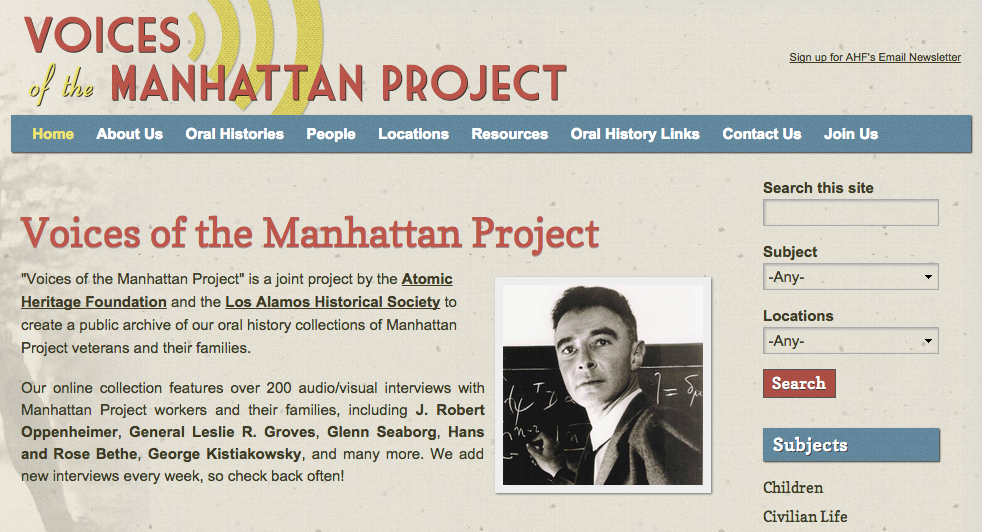On January 4, the Atomic Heritage Foundation’s (AHF) “Voices of the Manhattan Project” website was featured in Washington’s Tri-City Herald. The article, written by Annette Cary, highlights interviews with Manhattan Project veterans who worked at Hanford to build the world’s first nuclear reactor during World War II.
Phil Gardner, who was in charge of labor recruitment at the Hanford Site for the War Manpower Commission, travelled more than 100,000 miles to recruit workers for the Project, having no knowledge of what was being built there. Willie Daniels, a construction worker from Texas, described the tough working and living conditions there and recalled the segregated barracks where black workers were housed.
The oral histories are part of public and private collections taken by three enterprising authors who conducted interviews with some of the luminaries as early as the 1960s. In 1965, Stephane Groueff interviewed dozens of Manhattan Project principals for his book, “The Manhattan Project,” the first comprehensive history of the project written for the general public. In 1985, journalist S. L. Sanger spent his sabbatical from the Seattle Post-Intelligencer travelling 11,000 miles to interview dozens of former Hanford workers. In the 1980s-90s, Richard Rhodes recorded in-depth interviews for his nuclear history works.
Since the launch of the “Voices” website in September 2012, the Atomic Heritage Foundation has been able to process more than half of the 180 interviews. Some of the most recent additions include interviews with General Leslie R. Groves, a two-part interview with Chrysler automotive executive K.T. Keller, and a two-hour interview with Nobel Prize physicist Emilio Segre.
AHF has also conducted interviews with Manhattan Project Veterans over the last several months. Tom Forkner, who worked as a security guard at Oak Ridge and helped transport valuable products from the Tennessee facility to Los Alamos via a 53-hour drive, recalled the instructions his commanding officer gave him before embarking on the journey with the material: “Lose it, and you’d better be dead.” After the war, Forkner left the military and co-founded the immensely successful restaurant chain Waffle House.
AHF also recorded a second interview with Manhattan Project veteran James Schoke. Schoke, a member of the Special Engineer Detachment at the University of Chicago during the Manhattan Project, recalls meeting Soviet Spy George Koval during a trip to the top-secret Monsanto Chemical Company in Dayton, Ohio. “I went there quite often and I had to train him on how to maintain equipment,” remembers Schoke. “He was an excellent technician. He knew his job very well. And he was very friendly…of course, I had no idea he was a spy.”
The “Voices” website was made possible by grants from the Institute of Museum and Library Services, the Kerr Foundation, and the M. J. Murdock Charitable Trust. We are very grateful to these and other donors who have contributed generously to preserving the Manhattan Project.





